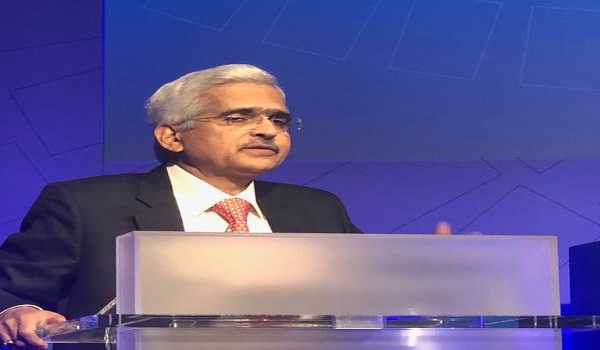India has taken decisive steps to lay down a sound foundation for macro-financial stability and robust economic growth, says Reserve Bank of India Governor Shaktikanta Das.
Das said India’s real gross domestic product (GDP) growth is expected to clock 7.2 per cent during 2019-20, the fastest among large economies of the world, growing by an average rate of around 7.5 per cent in recent years.
And inflation has remained below target, averaging 3.6 per cent for the period under the inflation targeting framework so far (since October 2016 up to February 2019); the current account deficit is expected to be around 2.5 per cent of GDP in 2018-19; and the gross fiscal deficit has adhered to budgetary targets.
The RBI Governor was delivering a speech on “Global Risks and Policy Challenges for Emerging Market Economies” at the International Monetary Fund meeting here on Friday.
He said that for the greater part of 2018, Emerging Markets faced a wave of global spillover risks leading to capital outflows, currency and asset price volatility and tightened financial conditions. These developments posed risks to growth and inflation.
Strong fundamentals, forex reserve buffers, capital in banking systems and prudent macroeconomic policies, however, enabled these economies to absorb global spillovers. Yet, they are not out of the woods yet.
Das highlighted three major risks confronting EMEs in 2019.
The biggest risk facing these economies is the growing evidence that global growth and trade is weakening. Unsettled trade tensions and developments around Brexit are imparting further downside risks to the outlook. There is considerable uncertainty as to whether this weakness is temporary or the beginning of a recession in advanced economies.
This uncertainty also seems to be reflected in several downward revisions to the 2019 global growth forecast by the IMF. Moreover, central banks across the world are stepping back from tightening monetary policy and some of them are promoting easier lending conditions. In some economies, fiscal stimuli are being used to support growth.
The second risk is that EMEs remain vulnerable to financial market volatility as the experience of 2018 has shown. The risk of sudden stops and reversals of capital flows has increased. Consequent external financing gaps and currency depreciations could undermine the outlook for growth and macroeconomic stability for these economies, just when global growth had begun to show signs of a synchronised revival a decade after the global financial crisis.
Furthermore, adverse financial conditions could aggravate existing stress in the balance sheets of lending institutions in some EMEs and stretch their capital requirements.
The third risk to EMEs is the high volatility in international oil prices. For net energy importers like India, the recent firming up of oil prices on production cuts by major suppliers presents risks to current account deficit and inflation. The financialisation of energy markets and changing underlying dynamics in the global oil market are adding an upside risk to prices, though the demand is subdued.
While break-even costs for shale production have apparently increased, investors have turned risk averse and are focusing on cash flows and financial returns. This may reduce the flexibility of shale output in filling the shortfalls created by OPEC plus production cuts.
So, in this environment, “we need more structural reforms precisely when the economy is slowing down to ensure durable momentum to growth,” he stressed.
As the global economy loses speed and with fiscal space getting squeezed, the focus in EMEs as well as advanced economies is likely to be on monetary policy as the first line of defence. Central banks may once again be expected to assume the mantle of guardians of the world economy. The global financial crisis has, however, exposed several limitations of conventional and unconventional monetary policy tools. In despair, some have turned to the heterodox evolution of ideas that has come to be known as modern monetary theory.
“While the jury is still out on this idea, I have my own strong reservations on this due to its serious downside risks. In the end, monetary policy must touch the real economy, spur investments, and maintain monetary and financial stability,” he said.
The RBI head called for “coordinated action” to revive growth and maintain macroeconomic, financial and price stability.




